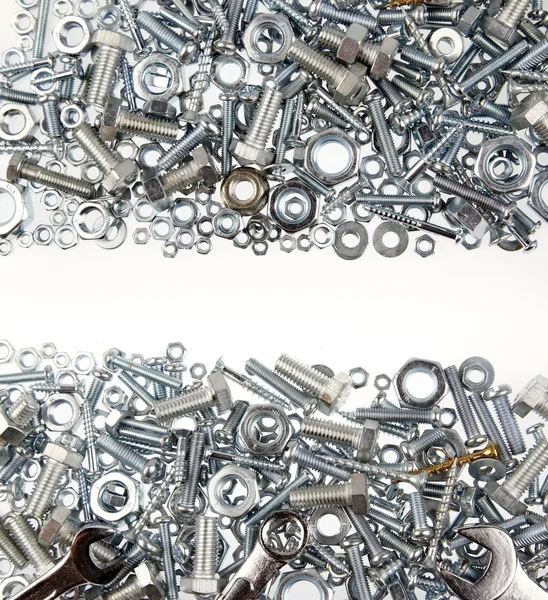Cutting-edge Technology: Future Developments in Bolts and Bolts

In terms of the field of engineering and construction, the importance of fasteners cannot be overstated. These small but powerful fasteners are essential in a variety of projects, ranging from complex machinery to sturdy buildings. As we consider the future of engineering, it’s crucial to comprehend the new trends shaping the design, material selection, and function of these key components. More and more, industry professionals are turning their attention to the diverse applications and types of nuts and bolts, guaranteeing that all projects is equipped with the right fastener to fulfill the requirements of contemporary construction and repairs.
In this detailed guide, we will explore the vast landscape of bolts and nuts, exploring from the basic design principles to advanced applications in various industries. Whether you’re a do-it-yourself enthusiast, a professional contractor, or an automotive repair technician, understanding the differences in the types, grades, and materials of bolts is key for selecting the most effective fasteners for your specific needs. Through our examination of these pioneering engineering trends, you will learn how to select the appropriate nuts and bolts, improving the quality and lifespan of your endeavors while tackling the challenges posed by different environments and materials.
Types and Functions of Fasteners and Bolts
Fasteners and screws are key components in a range of engineering and construction projects, serving the critical function of fastening components together. The most common type of bolt is the hex bolt, which features a hexagonal head that allows for easy gripping with a tool. Additionally, there are carriage bolts, known for their rounded heads and square shoulders that stop rotation when secured. Heavy-duty screws, or lag screws, are designed for robust applications, providing strong connections in wood and other dense materials.

In terms of nuts, the standard hex nut pairs with hex screws and is widely employed for common connection needs. Secured nuts offer extra security by preventing unraveling due to vibration, making them ideal for mechanical applications. Flange nuts come with a built-in washer that distributes load more evenly, ideal for delicate materials where regular fasteners might harm the material. Each type of nut serves a particular function, ensuring a secure fit and best performance.
Understanding the different substances and finishes used for fasteners and bolts is also crucial. Carbon steel, stainless steel, brass, and Ti are common materials, each selected based on strength, corrosion resistance, and weight requirements. Finishes like zinc plating and coating enhance durability, particularly for outdoor applications. Knowing these differences allows for informed decisions when selecting the right fasteners for specific projects.
Substances and Finishes
The selection of substances for nuts and bolts plays a critical role in their function and use. Common materials include steel, brass, and titanium, each offering unique properties suited for varied conditions. Steel is favored for its sturdiness and longevity, making it suitable for heavy-duty applications. Copper, known for its corrosion resistance and visual appeal, is often used in plumbing and wiring components. Aluminum, while costlier, offers exceptional strength-to-weight ratios and resistance to high temperatures, making it appropriate for aerospace and high-performance applications.
Finishes also considerably influence the lifespan and function of fasteners and bolts. Zinc plating is a popular option for hardware used in outdoor environments, providing a protection against rust and decay. his comment is here galvanizing, a enhanced process, involves applying a heavier layer of zinc alloy, making it appropriate for severe conditions. Additionally, various powder finishes can be applied to enhance look and further protect against external harm. Understanding these finishes is crucial for selecting fasteners that will endure specific environments.
When choosing nuts and hardware, it's also crucial to consider the potential for electrolytic corrosion when varied metals are used together. Hardware made of different materials can lead to accelerated corrosion if not properly protected. Coatings and finishes play a critical role in mitigating this risk, helping guarantee that the integrity and durability of the nuts and bolts are maintained in their proper applications.
Buyer Guides and Reviews
When choosing nuts and bolts for your project, it is important to understand the differences between SI and imperial fasteners. Metric units are generally used in most international applications, especially in Europe, while imperial sizes are common in the United States. Knowing which system your project requires can help prevent matching issues and ensure that you are using the correct sizes for your specific requirements.
Measuring nuts and bolts accurately is another important aspect of purchasing fasteners. To measure effectively, you need to determine the diameter, length, and thread pitch. For bolts, the diameter is taken at the body, while nuts require measuring the hole size. Additionally, thread pitch indicates how tightly the threads are spaced; ensuring that the pitch matches both the nut and bolt is essential for a secure fit. Utilizing Bolts and Nuts can provide precise measurements, facilitating a better match for your project needs.
As you shop for quality fasteners, consider aspects such as material, coating, and strength ratings. Different materials, such as stainless steel, bronze, or titanium, offer distinct benefits in terms of strength and rust resistance. Additionally, coatings like zinc plating or anodization can improve longevity in exterior applications. Understanding how to compare these characteristics will help you make wise decisions that ensure the fasteners you choose not only meet industry standards but also function successfully in their designated applications.
